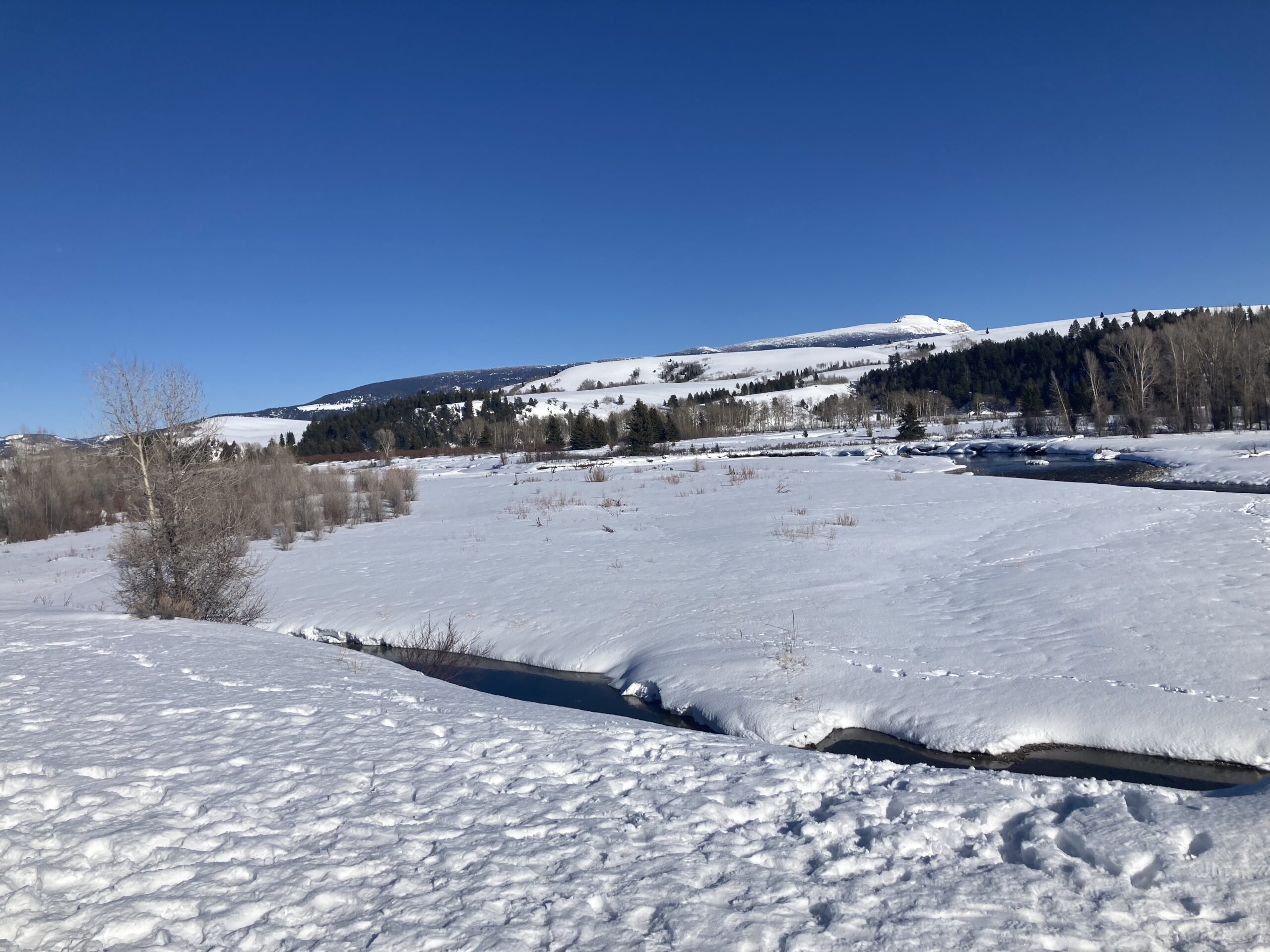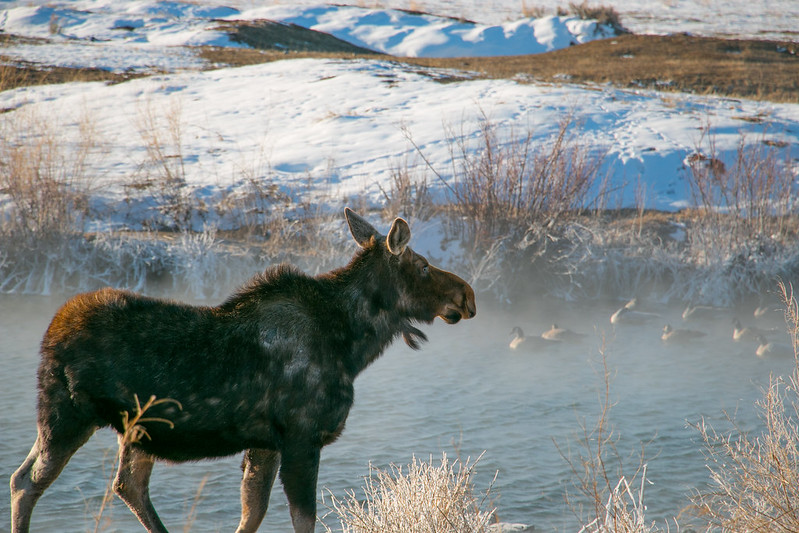THREE SPOTS TO WATCH WILDLIFE THIS SPRING
Witness wildlife on the move as the snow begins to melt!BLOG
By Kyle Kissock | The Jackson Hole Wildlife Foundation
While spring may have arrived in other parts of the United States, Jackson Hole feels locked in winter, buried under a stubborn layer of snow that just won’t seem to start melting.
Don’t be fooled however – spring “green-up” is on the way, as are its accompanying movements of wildlife species, soon to be departing wintering grounds and making seasonal return trips to the valley.
If you’re exploring Grand Teton National Park this spring, you might consider paying a visit to the following locations, during what can be an exciting time of year to witness wild migrations unfold!

Bighorn sheep occur here in the Greater Yellowstone Ecosystem as well as mountain ranges and desert basins across the American West. Males (rams) have a spectacular set of curled horns which get bigger with age and are used for predator defense and in combat with fellow rams for mating rights. Photo: United States Fish and Wildlife Service
Miller Butte: Bighorn Sheep
Miller (or Miller’s) Butte is a reliable place to observe bighorn sheep during winter months. To get to Miller Butte, access the National Elk Refuge Road just northeast of the town of Jackson at the far east end of Broadway. Here, the road is generally well-maintained and can be accessed for several miles.
You cannot leave the road since the National Elk Refuge is closed to foot traffic. However, roadside pullouts and slow speed limits make observing sheep and other wildlife convenient. As with most wildlife-watching destinations, binoculars or a spotting scope will make scanning the butte’s cliff bands for sheep much easier. Golden Eagles, coyotes, and ravens are also commonly observed in this area.
By late spring, the sheep and the elk that winter on the refuge will have dispersed to calving ranges deep in the Gros Ventre Range. Here, they will be much harder to find absent a backcountry trek deep into the wilderness.
Did you know: The Teton Range also has a population of native bighorn sheep. This smaller population has dwindled for many years due to pressures from human development at lower-elevation and winter recreation such as skiing.
Gros Ventre Road and river bottom
Riparian zones (areas near water) form important habitat for wildlife across the arid American West, and the Gros Ventre river bottom is no different.
The Gros Ventre River is a “Wild and Scenic River” with headwaters originating high in the mountains east of Jackson Hole. Where it flows through the Jackson Hole valley, it forms a boundary between Grand Teton National Park and the National Elk Refuge for much of its extent. Here, the river is paralleled by the Gros Ventre Road west of Kelly, making for a beautiful drive year-round with excellent wildlife-watching opportunities.
While the entire gamut of native megafauna may be encountered along the Gros Ventre River, this river is an especially prime location to view moose.
Individuals from a small herd of bull moose which spends portions of fall and early winter browsing in the nearby sagebrush flats, will reliably make their way down to the river as the snow gets deep. You can use the elevated pullouts along the road to scan for these large, dark-coated ungulates amongst the willows and spruce trees. If you do spot a moose please remember to give it plenty of space so as not to stress it and cause it to burn unneeded energy reserves. Like many animals, moose need to conserve all the calories possible to endure Jackson Hole’s harsh winters.
Did you know: Biologists believe the beginning sometime in the 1800’s, moose began to colonize western Wyoming, moving south and east from Montana and Idaho.

The view from a pullout along the Gros Ventre River. This riparian corridor forms excellent habitat and is used by a variety of wildlife. During winter, moose tend to gather here seeking relative shelter and foraging amongst the spruce groves and willows.
Kelly Warm Spring
Kelly Warm Spring is a natural hot-spring just north of the Town of Kelly. It averages a temperature of 80 degrees Fehrenheit, and while human swimming access is not allowed due to high levels of harmful bacteria, the area surrounding the spring attracts a plethora of wildlife species.
Beginning as early as mid March, Mountain Bluebirds will begin reappearing in the Jackson Hole. These sky-blue colored songbirds are among the first returners and generally start showing up when the landscape is still covered in snow. The fields around Kelly Warm Spring are often the first place Bluebirds are sighted in the valley; look for them on fence posts, road signs and perched on the top of aspen snags.
Kelly Warm Spring is also a fantastic place to watch elk as they leave the National Elk Refuge in April and May. These herds are headed north to eventual summer range and calving habitat in Grand Teton National Park and the adjacent National Forest. On their way, they often stop over near Kelly Warm Spring, congregating in herds of hundreds where they can be viewed from Antelope Flat Road, as well as the parking area at the Springs.
Did you know: In 1927 a natural dam along the Gros Ventre River failed and flooded the Town of Kelly, killing six people.

A moose trots past one of the Kelly Warm Springs pools. The water here stays open and unfrozen all winter and provides a water source for ungulates like moose and bison and waterfowl. Photo: Grand Teton National Park.
